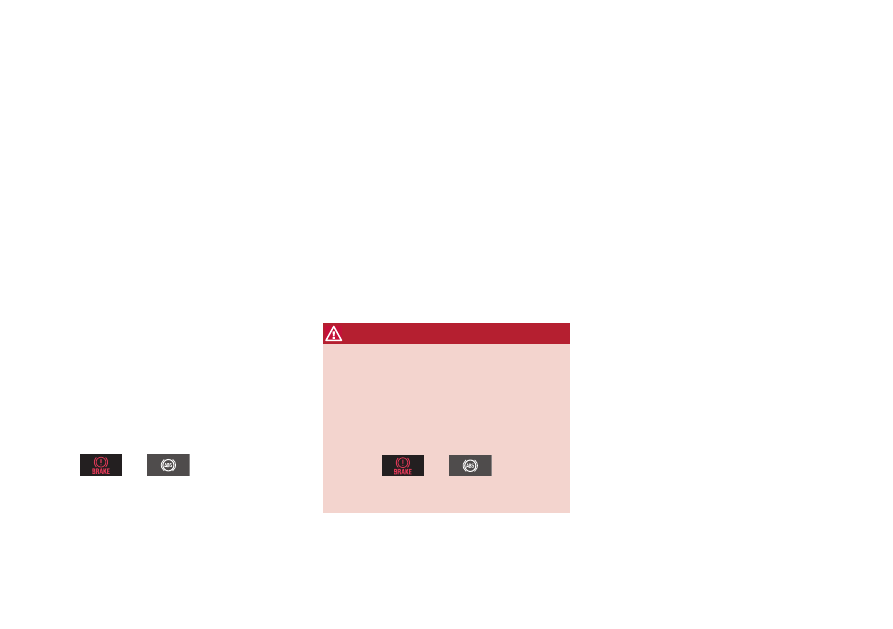Volvo V60 Cross Country (2018 year). Manual - part 5

||
INSTRUMENTS AND CONTROLS
78
Engine temperature
Engine overheating can result from low oil or
coolant levels, towing or hard driving at high heat
and altitude, or mechanical malfunction. Engine
overheating will be signaled with text and a red
warning triangle in the middle of the instrument
display. The exact text will depend on the degree
of overheating. It may range from
High engine
temp Reduce speed
to
High engine temp
Stop engine
. If appropriate, other messages,
such as
Coolant level low, Stop safely
will
also be displayed. If your engine does overheat
so that you must stop the engine, always allow
the engine to cool before attempting to check oil
and coolant levels.
See Engine compartment – coolant (p. 342) for
more information.
Fault in brake system
If this symbol lights, the brake fluid level may be
too low. Stop the vehicle in a safe place and
check the level in the brake fluid reservoir, see
Engine compartment – brake fluid (p. 343). If the
level in the reservoir is below MIN, the vehicle
should be transported to an authorized Volvo
workshop to have the brake system checked.
If the
and
symbols come on at
the same time, there may be a fault in the brake
force distribution system.
1. Stop the vehicle in a safe place and turn off
the engine.
2. Restart the engine.
•
If both symbols extinguish, continue driving.
•
If the symbols remain on, check the level in
the brake fluid reservoir, see Engine com-
partment – brake fluid (p. 343). If the brake
fluid level is normal but the symbols are still
lit, the vehicle can be driven, with great care,
to an authorized Volvo workshop to have the
brake system checked.
•
If the level in the reservoir is below MIN, the
vehicle should be transported to an author-
ized Volvo workshop to have the brake sys-
tem checked.
WARNING
•
If the fluid level is below the MIN mark in
the reservoir or if a warning message is
displayed in the text window: DO NOT
DRIVE. Have the vehicle towed to a
trained and qualified Volvo service techni-
cian and have the brake system inspec-
ted.
•
If the
and
symbols are
on at the same time, there is a risk of
reduced vehicle stability.
Warning symbol
The red warning symbol lights up to indicate a
problem related to safety and/or drivability. A
message will also appear in the instrument panel.
The symbol remains visible until the fault has
been rectified but the text message can be
cleared with the OK button, see Information dis-
play – menu controls (p. 116). The warning sym-
bol can also come on in conjunction with other
symbols.
Action:
1. Stop in a safe place. Do not drive the vehicle
further.
2. Read the information on the display. Imple-
ment the action in accordance with the mes-
sage in the display. Clear the message using
OK.